Site IDs
1/24
There's no tags or description
Looks like no tags are added yet.
Name | Mastery | Learn | Test | Matching | Spaced |
|---|
No study sessions yet.
25 Terms

Grand Shrine of Ise
200 CE
The shrine features unpainted cypress wood structures with thatched roofs, forked finials, and horizontal logs
Dedicated to Amaterasu, the sun goddess, it serves as Japan's exemplar of Shinto tradition and the veneration of kami
Rebuilt every 20 years through Japanese tradition, representing Shinto concepts of renewal and impermanence
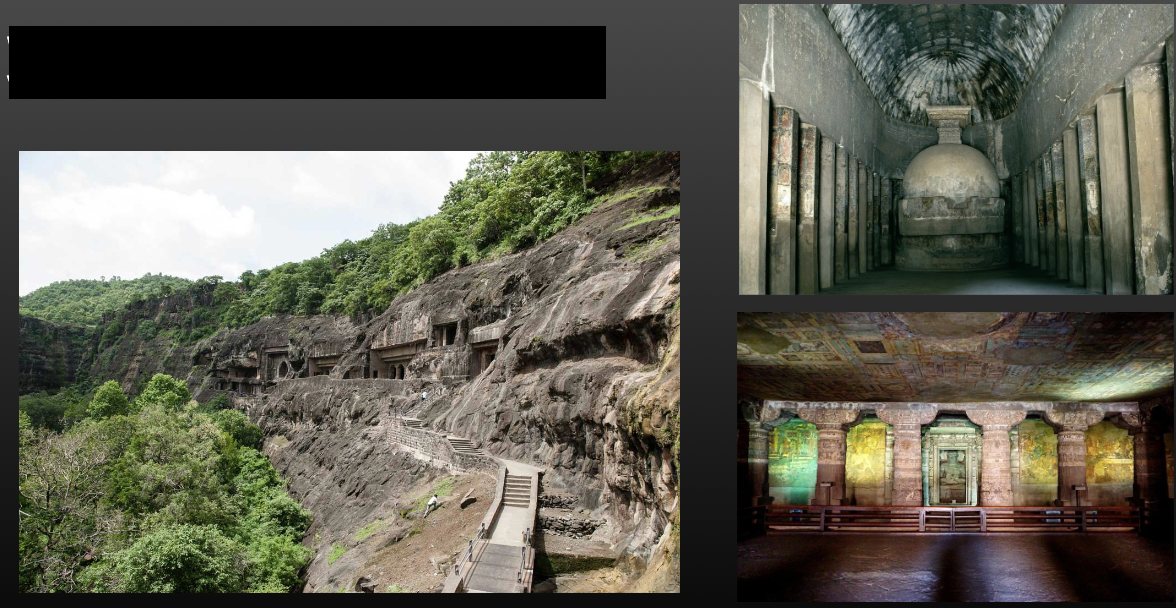
Could also be a black and white plan of a square-shaped structure
Ajanta Caves
200 BCE
Carved into a horseshoe-shaped gorge and consist of chaityas, viharas, and stupas
These caves were primarily Buddhist monastic retreats, reflecting the transition from Hinayana to Mahayana Buddhism
These rock cut structures are among most significant architectural accomplishments of early Indian subcontinent

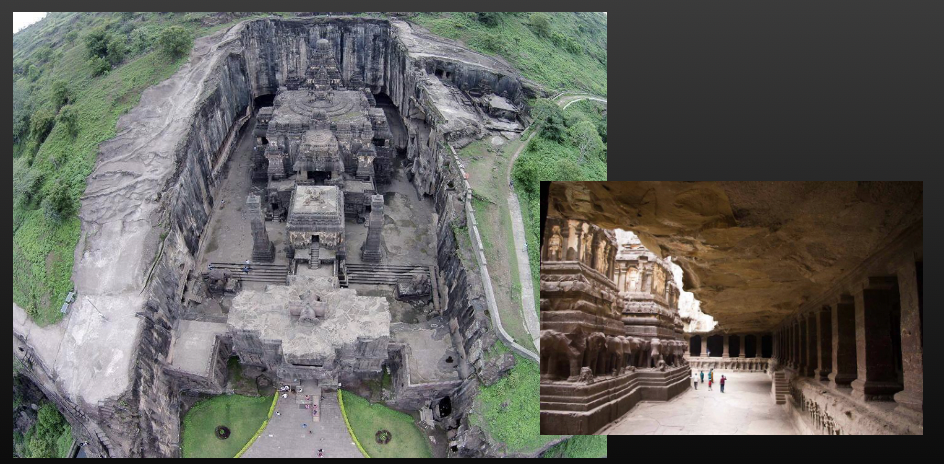
Kailasa Temple
700 CE
Carved from a single rock, featuring intricate sculptures, a central courtyard, and a towering spire
As an ancient Hindu temple, dedicated to Lords Shiva and Vishnu
Juxtaposes the significance of Hinduism with natural life by comparing the complexity of the temple to the untouched rock

Ryōanji
1600 CE
Famous for its minimalist Zen garden with 15 stones arranged in a gravel field, symbolizing balance and harmony.
Located in Kyoto (the center of Japanese feudal power), it exemplifies the extent of Buddhism’s power in Japanese culture
Features architecture similar to that of the Forbidden city in the temples, but still includes clear Shinto influence in its use of natural elements such as rock and wood

Synagogue at Dura-Europos
200 CE
The interior is set up in such a way that one has to pass through different rooms as thresholds via their spiritual authority to reach more remote and more religious spaces
Located in present-day Syria, the synagogue was built into the side of the city wall which served an architecturally protective purpose and religious purpose
As the earliest example of Jewish religious art, the synagogue features a Torah Ark at the entrance

Hagia Sophia
500 CE
Representative of Christian architecture taking a more monumental form as it is much larger than synagogues
Represents a move away from an intimate congregational focus in Judaism to the opposite, as the dome moves away from worshipers and instead toward the heavens
Originally a Christian cathedral built by Emperor Justinian, later converted into a mosque and now a museum


Great Mosque of Damascus
700 CE
As an early Islamic mosque, it adopts architectural traditions from Judaism and Christianity (Corinthian) but features Islamic architectural style (geometric interlace)
Like other mosques, it features a qibla to direct worshipers to pray toward the Mecca
The center of the mosque serves as a space for congregation and worship while the sides are lined with residential locations for those with occupations in the Mosque
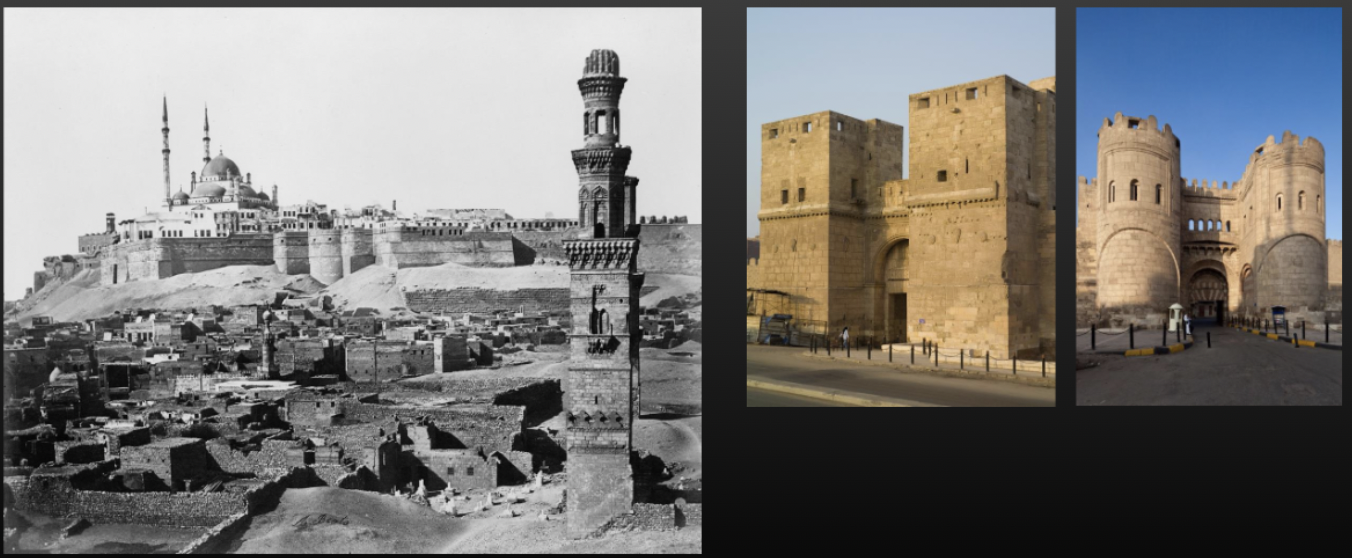
Citadel and City Gates of Cairo
1000 CE
Fortified structures with Islamic architecture, including defensive walls, domed mosques, and narrow passageways.
Established by Salah al-Din as a central defense structure in medieval Cairo.
Though it symbolized Cairo’s historical role as a political and military center, it eventually opened up to trade which allowed the city to grow to be the biggest city outside of China

Complex of Sultan al-Mansur Qalawun
1200 CE
Showcasing Mamluk architectural features, consisting of a mausoleum, madrasa (school), and mosque.
Built by Sultan Qalawun in Cairo, serving as a key religious and educational center in Cairo
Represents the political and religious power of the Mamluk Sultanate.

Capella Palatina
1000 CE
Originally commissioned by Roger II to be built on top of another chapel to represent a multi-cultural mix.
Located in Palermo, Sicily, reflects a blend of Islamic and Christian cultures as the two rise in tandem
Features a notable golden mosaic that wraps around the column bases and ceiling which illustrates a Byzantine influence
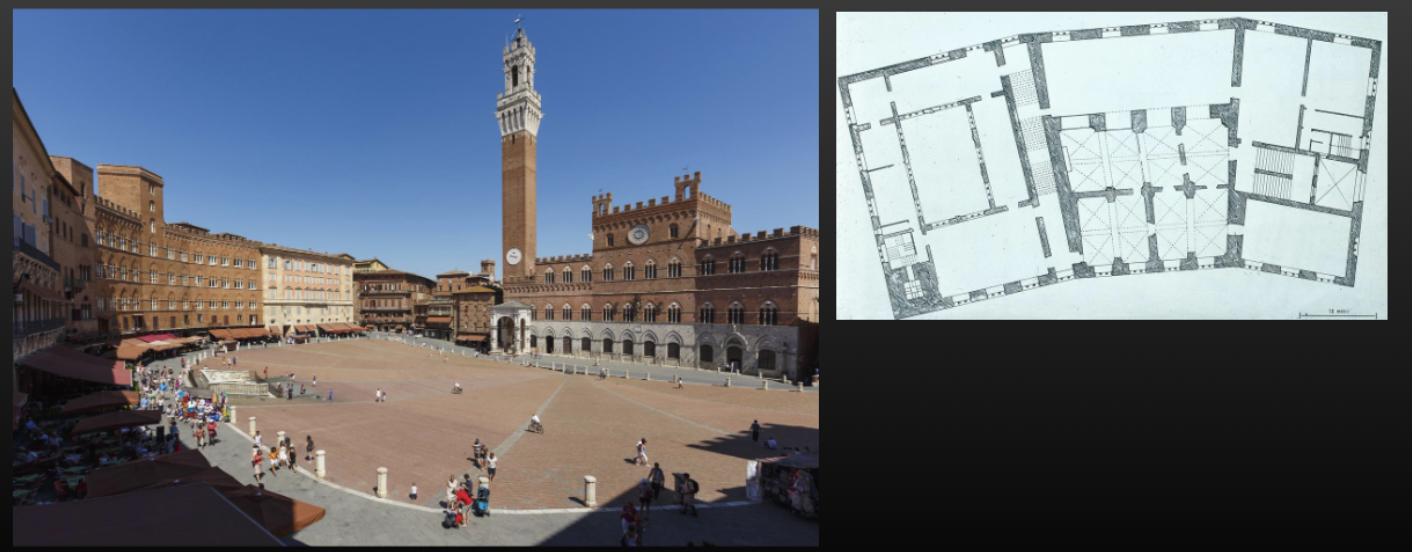
Palazzo Pubblico
1300 CE
Gothic-style building with a grand central hall and bell tower, showcasing Siena’s political strength.
Served as an architectural diagram of the structure of the government: The left for the Podesta (magistrate), the right for the Council of Nine, and the center for congregation between either side.
Represents the influence of the public market place in Siena which can be considered a result of trade (opposite from that of the Complex of Sultan al-Mansur Qalawun)
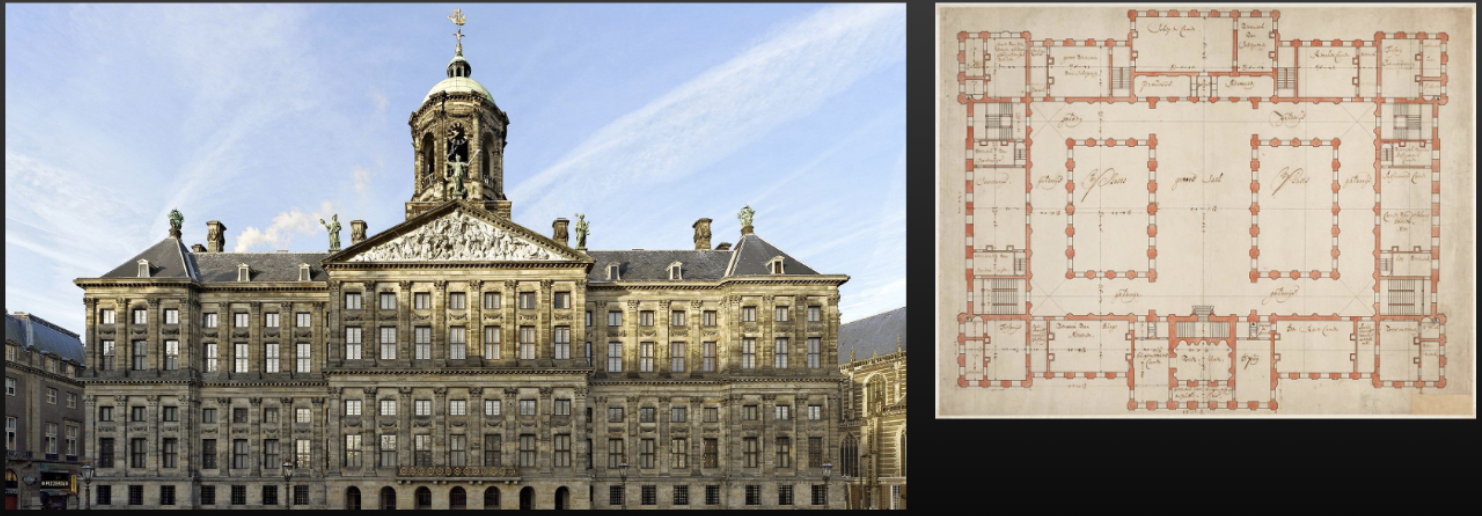
Amsterdam Town Hall
1600 CE
Classical façade with Corinthian columns, a central hall, a dome, and a pediment.
The monumental size and stark symmetry reflected Amsterdam’s wealth and political power.
Symbolized civic pride and the democratic ideals of Amsterdam as the central hall was “the people’s hall,” but now serves as the Royal Palace.

U.S. Capitol
1790 CE
The monumental size and stark symmetry symbolizes the strength of American democracy and bi-partisanship
Served as an architectural diagram of the structure of the US Congress: the House and Senate on either side
The dome, columns, and pediment connects the U.S. to the ideals of ancient Greece and Rome, emphasizing governance and law.

Nijo-jō
1600 CE
Served as a residence for the Tokugawa shogunate in Kyoto, representing feudal Japanese power.
Asymmetrical linear spatial organization that goes from public to increasingly private as one moves from the entrance toward the back
Symbolizes security and control, with features like nightingale floors that chirp when walked on.

Château de Versailles
1600 CE
Extravagant Baroque palace in an enfilade spatial structure with grand galleries, opulent chambers, and elaborate gardens.
Built by Louis XIV, symbolizing absolute monarchy and France’s political and cultural dominance.
Features a hallway of mirrors which illustrates the narrative of the public performance that passing through the Chateau requires
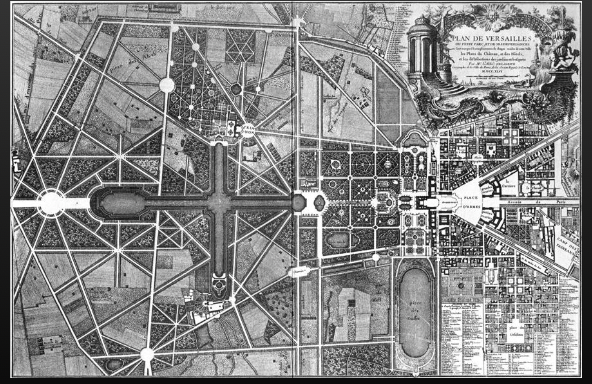

Plaza de la Constitucion (Zócalo)
1500 CE
Large public space surrounded by several government buildings and the Metropolitan Cathedral.
Located in Mexico City, it is the largest city square in Mexico and the second largest city square in the world.
Central site for civic events and national celebrations in Mexico City which symbolizes Mexico’s historical continuity as it sits atop the ancient Aztec city.

Iglesia de la Compania de Jesus, Arequipa
1700 CE
Baroque-style church with intricate altarpieces, sculptures, and a central dome.
Built by Jesuits in Peru, reflecting the Catholic Church’s influence during the colonization of Latin America.
Represents a fusion of European Baroque and indigenous South American architectural elements which displays the profound influence of indigenous craftsmanship on colonial architecture

“Vue Perspective de la Ville de Chaux”
1800 CE
Utopian city plan by Claude-Nicolas Ledoux, a perfect circle designed on saltworks.
Reflects Enlightenment ideals of combining residency and occupation to influence social change (the houses surrounded the salt factory).
Although Ledoux’s work influenced later modernist architects such as Le Corbusier, only a semicircle of the plan was finished.

Crystal Palace, London, UK
1850
Iron and glass structure that pioneered industrial architecture and featured symmetrical design.
Built for the 1851 Great Exhibition, symbolizing the Industrial Revolution and Victorian Britain.
Represented the spread of enlightenment faith as it was the largest building every built at that time and only built in 190 days.

Houses of Parliament and Palace of Westminster
1830
Gothic Revival design by Awn Pugin with pointed arches, vaulted ceilings, and the iconic Big Ben tower.
Seat of the British Parliament, the monumental size and symmetry of the building reflects the power and tradition of British governance.
Represents the growing distrust in Enlightenment values and technological progress following the modernist boom after the industrial revolution
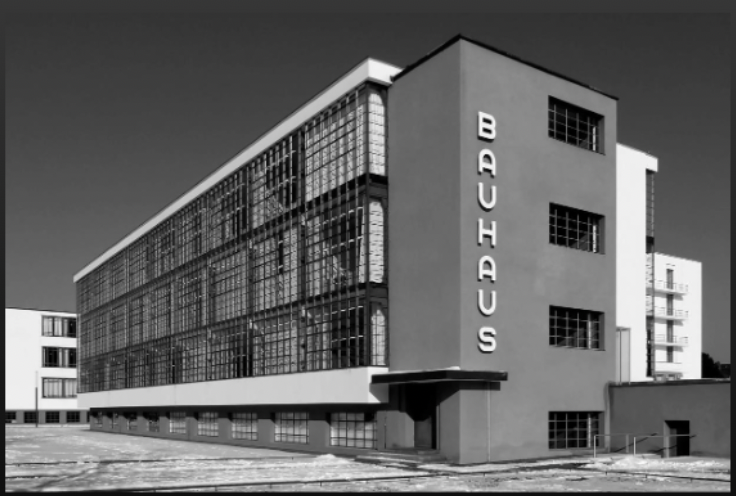
Bauhaus
1920
Modernist design featuring clean lines, flat roofs, and functional spaces using industrial materials.
Bauhaus, which literally meant “building house” served as a School of Building and architecture in throughout the 1900s
Walter Gropius’s ideals revolutionized architectural education and influenced modern design worldwide.
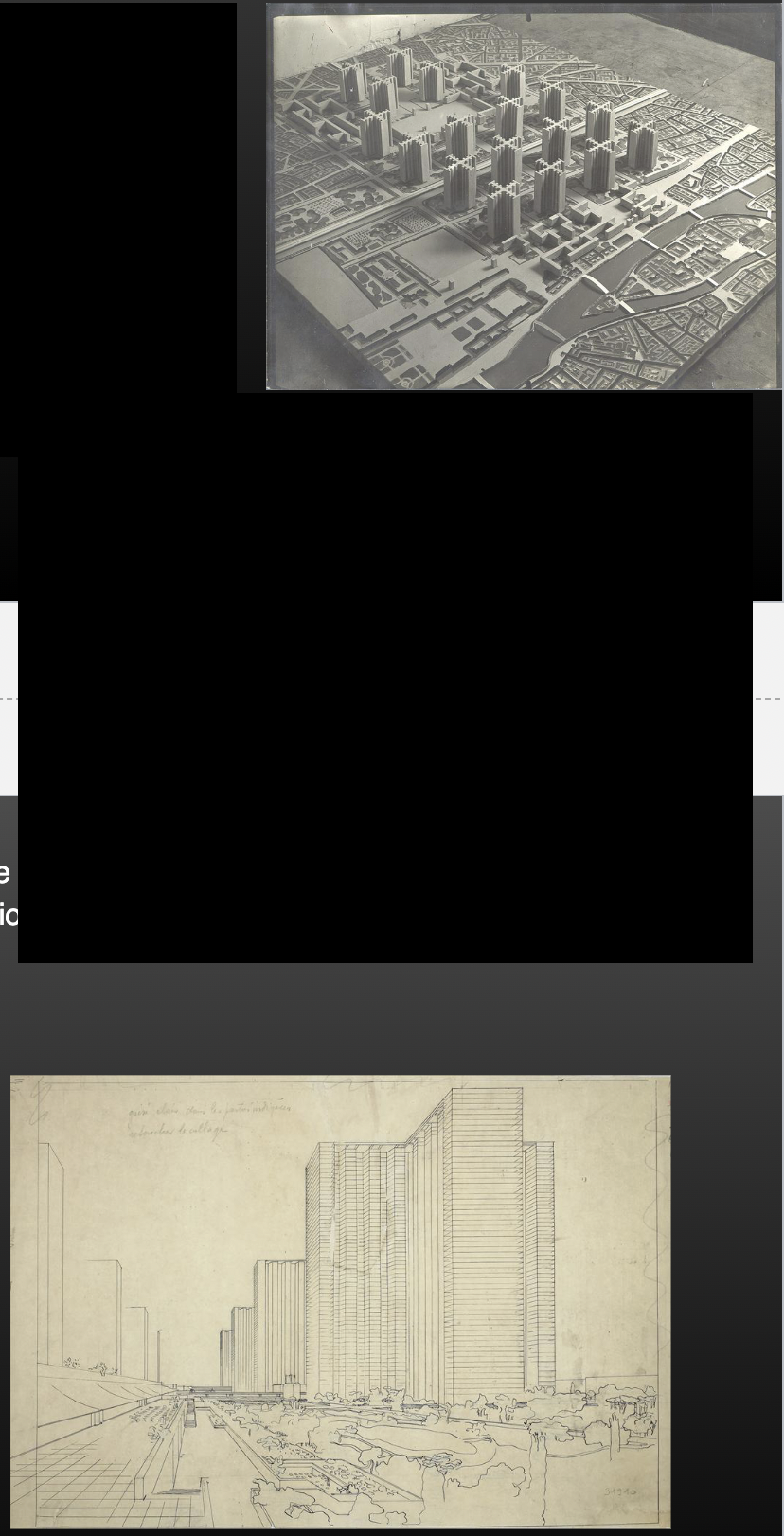
Plan Voisin (unrealized)
1920
Proposed radical redesign of Paris with modernist skyscrapers, green spaces, and open streets.
The plan featured 18 identical skyscrapers that would have served a dual—residential and occupational—purpose.
Heavily influenced by Le Corbusier’s ideas set out in Vers une Architecture as the Plan Voisin aimed to use architecture as a catalyst to modernize Paris architecturally and socially

Master Plan for Brasília
1950
Designed with wide avenues, radial planning, and monumental buildings, reflecting modernist ideals.
Symbolized Brazil’s modernization and break from colonial history.
Demonstrates how architecture can reflect political and cultural aspirations.

National Congress of Brazil
1960
Modernist design by Oscar Niemeyer, featuring sleek forms, twin domes, and a glass facade.
Central to Brasília’s architecture, symbolizing Brazil’s democratic ideals through the juxtaposition between the dome and bowl-shaped structure on the roof.
Represents Brazil’s political transformation, commitment to modernism, and break from colonialism.

National Museum of African American History and Culture
2010
Distinctive bronze-colored exterior with intricate metalwork inspired by African American culture.
Part of the Smithsonian, addressing African American history by telling the story of African American history floor-by-floor
Located on the National Mall, about 60% of the museum is underground due to height restrictions imposed on the National Mall.